(2nd in a series on the Sprang Hairnet. Start reading from the beginning here.)
I find it helpful to consider some sprang examples, and the basic technique before diving into specific construction.
Sprang is a way of making fabric that I think of as being the inverse of knitting. If knitting is all horizontal threads, that are distorted to create vertical links, sprang is all vertical threads, that are distorted to create horizontal links. Similar to knitting, sprang is very drapey and will flex in its structure to contain a lumpy mass. (Like a pile of hair.)
You create the fabric by twisting vertical threads (warp threads) together, and by looping them through each other. Twisting together more times creates bigger holes. Looping through across the fabric creates horizontal lines.

This is a diagram from Margarethe Hald’s now out-of-print classic, Ancient Danish Textiles from Bogs and Burials. I’m lucky enough to know someone with a copy, though I’ve also gotten ahold of it through inter-library loan.
(Legal disclaimer: GMA is a participant in the Amazon Services LLC Associates Program, an affiliate advertising program designed to provide a means for sites to earn fees by linking to Amazon.com and affiliated sites. Why? Because it’s faster to grab an affiliate link from Amazon and get lovely pictures and links. Haven’t earned any actual money yet.)
You keep the twists from untwisting by threading a long rod or a separate ‘stay thread’ through the loops as you go.
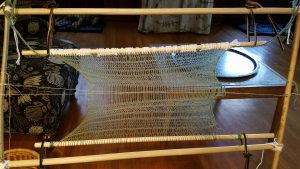
(I’m jumping ahead a bit here, but there’s the stay threads passed through the loops, and tied to the frame.)
Sprang is ancient, and has been done by various cultures for a long time.
I’m interested in Bronze Age Norse sprang.

But Coptic Egyptians made sprang caps in the 5th-7th century AD. Here’s a great blog post on one cap.
It’s quite different from the Danish hairnet.
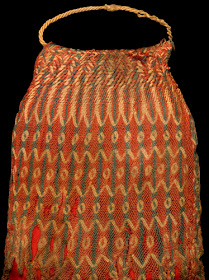
These crazy pants are a museum reproduction of a Trojan archer. I found this picture via this lovely Pinterest board of all sorts of sprang applications, which is very educational!
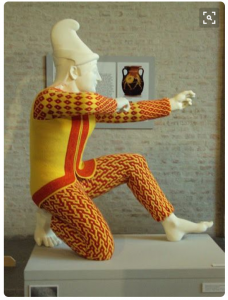
Check out these wonderful leggings, inspired by a 15thc Venetian painting! Read more about them at their creator’s blog, here.
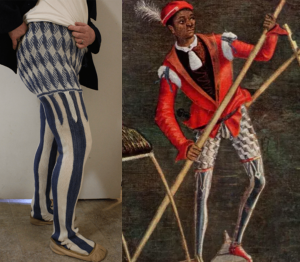
Go there, and look at pictures of sprang sashes and bags running into the 19th century and into this country, South America…it’s everywhere!
Some people today propose shaped sprang as very modern-looking garments.
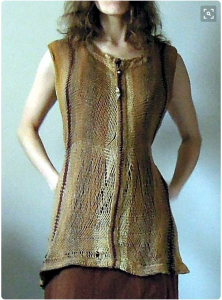
This sleeveless sprang tunic is very lovely, and shows off sprang’s drapiness quite well. I am not quite THAT ambitious – I just wanted something to cover my modern haircut!
I started this hairnet project with a basic understanding of sprang construction, having taken a class at Pennsic back in 2009. I think this Lady is who taught this class – there’s a great tutorial of technique here!
I also *had* owned a copy of Peter Collingwood’s The Techniques of Sprang, which is widely regarded as *the* textbook for sprang. But my previous interest in sprang was another one of those activities where I just wanted my product, and variations in the activity itself don’t hold my interest, so I sold the book.
(It’s out of print, and now expensive. If you don’t want that, I’ve looked at the reviews for this one, and I think it could carry you to good results.)
Although the Pennsic class had provided me with a small PVC loom, I’d long since passed it on, so I needed a loom. I wanted to try alternate ways of making a loom, since I wanted to have a primitive look as I hauled it around. I’ll cover how I made a loom for sprang hairnets in the next installment.
nice information.